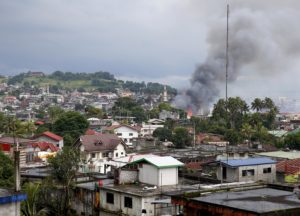You cannot kill me. I am already dead.”
The villain Renard in the 1999 James Bond thriller “The World is Not Enough” offers a different take on death. In another scene, he explains this strange notion by quipping “There is no point in living if you cannot feel alive.”
His view has an antithesis in today’s COVID-19 era. There are people who choose not to live in order not to die.
No one disputes that there is more to life than breathing normally, free from the virus-induced fibrosis in your lungs. There is the loving hug of a loved one, the reassuring presence of a loyal friend, the enduring romance with a spouse, the exhilaration of sports, the soul-enriching music and the arts, the fulfillment of providing for one’s family, the excitement of an engaging profession, the thrill of a challenging business, and a myriad of other things that dignify a human being by fully engaging both his body and spirit.
As the world talks and thinks about reopening, worried minds assert that extending the lockdown and suspending life longer is what “science” dictates. My question is which part of the science?
At the onset of COVID-19, the only information that science could offer was that the virus was infectious, it could kill, and there was yet no vaccine to neutralize it. That was the preamble. But it was a preamble whose tentacles continued shifting along the way. The scientists could not even agree on many basic assumptions in the beginning, such as how the virus is transmitted and whether masks actually made sense.
Months after the crisis, the world knows so much more. The scientists have used this new knowledge to inform and refine the algorithms which originally projected Armageddon by the summer. Assumptions have been replaced by dynamic scientific data and have brought conclusions closer to objective reality. Science has made the case for unlearning erroneous assumptions we fearfully clung to at the onset of COVID-19.
There is extensive data that justifies directing our prevention efforts and resources to the most vulnerable sectors and activities. There is data from various places and environments that suggests what human and societal behavior can abet the virus or frustrate it. Science has therefore put a clearer face to the risk and has given us the luxury of a targeted response and not a sweeping “one size fits all” solution. We have been given the option to regain our lives by adjusting and adapting to what many fashionably call the “new normal.” I dare argue that unleashing the suppressed normal will affect our lives more profoundly than the temporary fixes we resorted to in the current “abnormal.”
So here we are. We are given the chance to embrace the entire science, not just the incipient preamble but the totality of intelligent information that the world has collectively put together. We can choose to live smart, live cautiously and live again. I have friends who would rather cling only to the preamble that the virus is infectious, it could kill and there is yet no vaccine to neutralize it. The rest of the science does not comfort them. I respect them even if I stand opposite them on this issue.
It will require tremendous intellectual courage to set aside a worldview built on an unfinished preamble wrapped with irrational but deep-seated fear, biases and pride. I haven’t seen many people take kindly to the recriminatory “I told you so.” It is often better to let them choose in their own good time when they want to feel alive again.
I rest easy in the thought that at the end of the day, second or third wave notwithstanding, fatigue will catch up with the fear and give way to an enlightened walk alongside complete naked science not colored by prejudices. The human spirit after all cannot resist the lure to pursue life in its fullness.
This article reflects the personal opinion of the author and does not reflect the official stand of the Management Association of the Philippines or MAP. The author is the Chair and CEO of the Maybridge Finance and Leasing, Inc. and past president of MAP.


